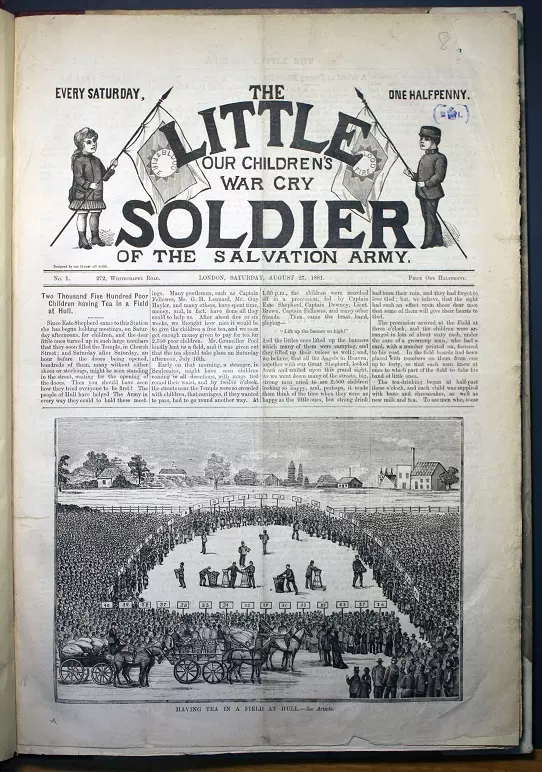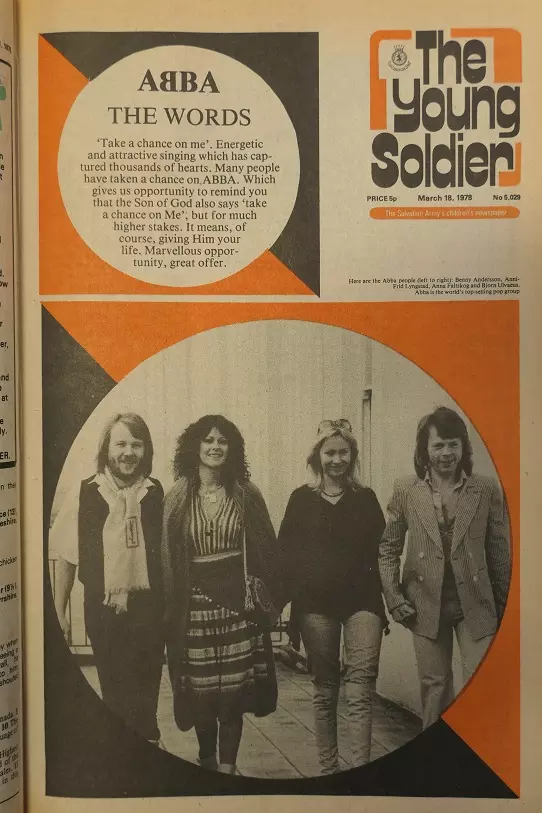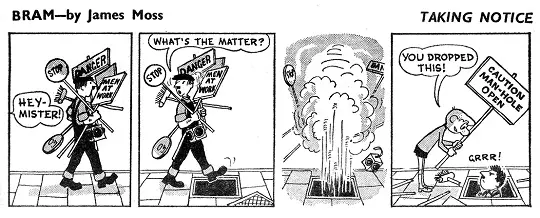Salvation Army out (comic) strips Beano on its 140th anniversary
published on 20 Aug 2021

The Salvation Army’s children’s magazine Kids Alive! is marking its 140th anniversary this week (August 27) and it started publishing 57 years ahead of the first Beano.
Kids Alive, which was launched in 1881 as the Little Soldier, started running comic strips in 1928, at least a decade earlier than Dennis the Menace put on his jumper with the first Beano comic publishing in 1938[i].
The church and charity is celebrating this publishing milestone by releasing rarely seen comic strips and front covers from The Salvation Army archives.
Aimed at children aged from 7 to 11, while the name of The Salvation Army children’s magazine has changed over the years, its essential character as The Salvation Army’s comic for kids has stayed the same throughout that time.

Kid’s Alive!’s cartoon career kicked off with The Bunny Boys, followed by The Joy Boys and Peter of the Primary, which had a full page throughout the 1930s, Billy the Bear, Bram and the Jelly Babies and continues today with Patch’s Pals and Kiddo.
However, the magazine always had a serious purpose, introducing children to hard hitting issues social with a Christian lens alongside light-hearted comics. Its first ever front cover highlighted child hunger and featured a Salvation Army tea party in Hull which fed 2,500 children.
Kids Alive! editor, Justin Reeves, said: “Kids Alive! from its very beginnings was ahead of its time, never shying away from informing children about social justice issues from poverty to the experience of child evacuees. We still believe children have a magazine that is for them, that they can relate to, that brings their faith to life. We are so proud of our young readers, who are marking this anniversary by getting sponsored to raise funds for The Salvation Army’s vital work in communities up and down the country.”

Young readers of the magazine are being encouraged to take part in a fundraising challenge to mark the prestigious anniversary, while raising vital funds for their local Salvation Army church or centre. The 140 challenge will see the young people get sponsored to take part in 140 different activities during the school holidays.
Kids Alive! top facts:
- First issue - Saturday, 27 August, 1881
- Continued printing throughout both world wars
- Iconic issues include the Queen’s diamond and Golden jubilee editions, highlighting the experience of evacuees during the Second World War, and another about the blackouts. Another issue from the 1970s features the band Abba on the front page.
The Salvation Army continues to support families in need across the country with its food banks, homeless centres, and employment services.
Rebecca and Richard Beesley, both 43, from Kent, have three children Josh, 17, Daniel, 15, and Trinity, nine, who have been avid readers of Kids Alive! for a decade. Trinity, who has juvenile arthritis, also featured in an awareness raising article.
Rebecca said: “The magazine has a nice family feel to it and we’ve always felt part of a Kids Alive! community that cares. They told Trinity’s story, raised awareness and explained what our charity Juvenile Arthritis Research is trying to do. We felt the magazine really supported us.
“The children love the activities, stories, comic strips. They never missed the competitions.”

In 1995 the magazine changed its name to Kids Alive! from YS, and in its current format includes comic strips, games, crosswords, and stories, as well as articles about the Christian faith from a child’s perspective.
Steven Spencer, Director of The Salvation Army’s International Heritage Centre, said: “From its very beginnings The Salvation Army’s magazine for children aimed to present the Christian faith in an attractive way relevant to its young readers.
“This was incredible as in the early 1880s children were only just beginning to attend school in large numbers and the era was dominated by Victorian paternalistic attitudes towards children.
And yet The Salvation Army had seen the need to create a magazine just for them to learn and read the stories of other children and their faith in God.”